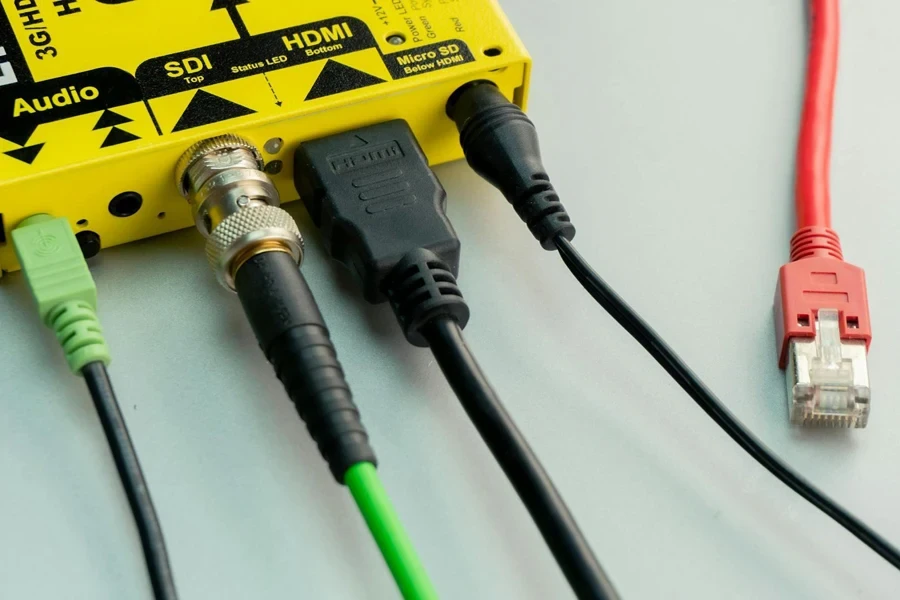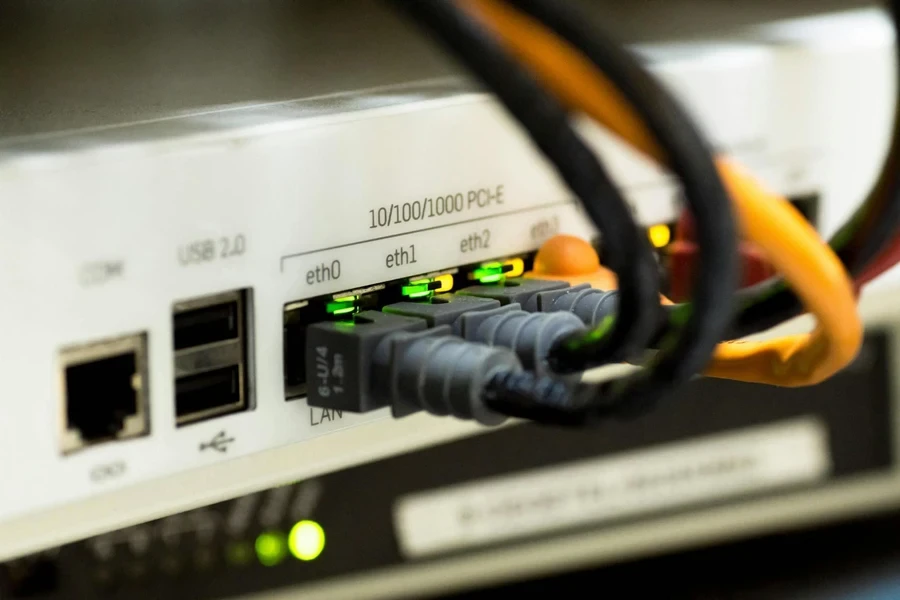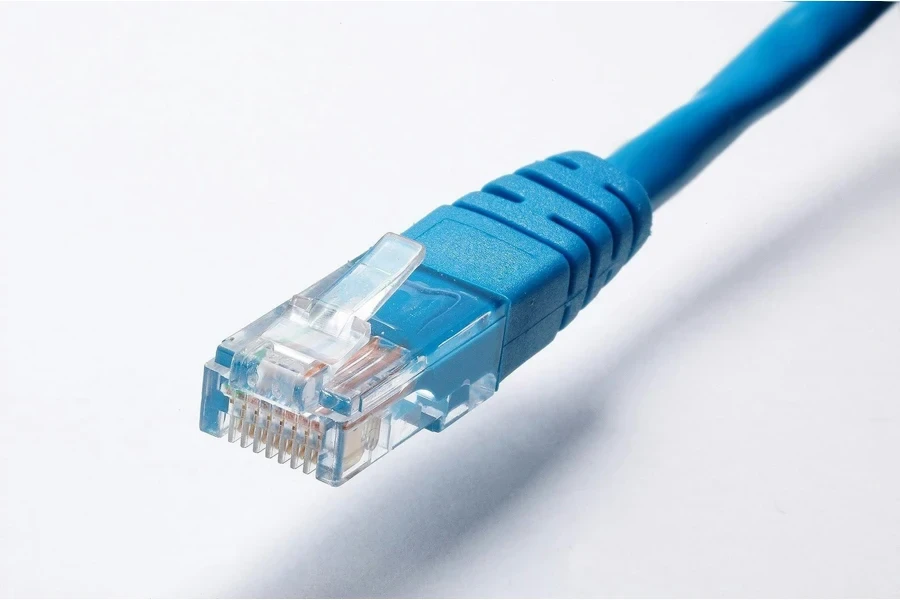Table of Contents
● Introduction
● Market overview
● Types of network cards and their features
● Things to consider when selecting products
● Conclusion
Introduction
Network Interface Cards (NICs) are crucial for achieving seamless connectivity in our increasingly digital world. The NIC market is rapidly evolving, driven by rising internet demand, the proliferation of IoT devices, and technological advancements. This comprehensive guide explores the recent market trends, showcases the top NIC models, and offers expert advice on selecting the best NIC for specific needs. By understanding these key elements, you can stay ahead in this competitive market and stock products that are currently in demand.
Market overview

The Network Interface Card (NIC) market is projected to grow at a compound annual growth rate (CAGR) of 5.25% from 2023 to 2028, increasing by USD 3.37 billion. The market’s growth is driven by the rising demand for high-speed internet, the growing adoption of virtualization technologies, and the expanding need for data centres. The increasing digitization and the proliferation of IoT devices have significantly boosted the demand for advanced NICs that provide faster data transfer speeds. As digital infrastructure continues to expand, the need for robust and reliable network connections becomes more critical, further propelling the NIC market’s growth.
Key players in the NIC market include Allied Telesis, Broadcom Inc., Chelsio Communications, Cisco Systems Inc., and Intel Corporation. The market is growing due to trends like cloud computing and the BYOD movement, which need high-performance NICs for better data transfer and connectivity. Innovations in NIC technology, such as improved security and energy efficiency, and strong demand in North America for high-speed internet and cloud services, are driving significant market growth.
Types of network cards and their features

Internal NICs
Internal NICs are integrated directly into the motherboard, providing reliable and high-speed network connections with minimal latency. These NICs typically support data transfer rates up to 1Gbps or higher and come with advanced features such as Wake-on-LAN, remote management, and advanced error-correcting codes. Examples include the Molex SST DN4 Card, which supports a variety of computer architectures like PCI, PCI Express, PC/104, and VME, and includes robust support for industrial applications.
External NICs
External NICs offer versatile connectivity options and are easy to install, connecting via USB, PCI Express, or Thunderbolt ports. These NICs are ideal for users who need to enhance their network capabilities without opening their computer cases. External NICs can support data transfer rates from 1Gbps to 10Gbps, with some advanced models supporting multi-gigabit Ethernet. For instance, the Itron’s DI Network Interface Card supports edge computing with features like network offloading to reduce CPU load and enhance performance.
Specialized NICs
Specialized NICs are tailored for high-demand applications, such as servers, high-performance computing, and industrial automation, where ultra-low latency and high data throughput are critical. These NICs often support advanced networking standards like RDMA (Remote Direct Memory Access) and iWARP (Internet Wide Area RDMA Protocol), which significantly reduce latency and improve data transfer efficiency. For example, the LR-LINK M12 Interface Network Card is designed for rugged environments, featuring a high IP protection level against dust and moisture, and anti-vibration properties, making it ideal for industrial automation.
Things to consider when selecting products

Compatibility
Ensuring that a Network Interface Card (NIC) is compatible with existing hardware and network requirements is paramount. This involves verifying that the NIC supports the operating system in use and fits the available slots on the motherboard, such as PCI, PCI Express (PCIe), or USB. It is also critical to ensure compatibility with network protocols like Ethernet or WiFi to achieve seamless integration. For instance, modern NICs supporting PCIe 4.0 provide significantly higher data transfer rates and lower latency compared to older PCIe 2.0 slots.
Performance needs
The data transfer rates and stability required for specific applications must be carefully evaluated. NICs are available with various speed ratings, typically ranging from 1Gbps to 10Gbps or higher for Ethernet connections. High-performance applications, such as real-time data processing, cloud computing, or high-definition video streaming, may necessitate NICs with advanced features like RDMA (Remote Direct Memory Access), which reduces CPU load and improves data throughput. For example, a NIC with support for 10GBASE-T can provide up to 10Gbps over standard Cat6a cabling, which is essential for data-intensive environments.
Connection type
Selecting between wired (Ethernet) and wireless (WiFi) NICs depends on the specific network setup and performance requirements. Wired NICs offer stable and high-speed connections, often supporting speeds up to 40 Gbps or more with technologies like QSFP (Quad Small Form-factor Pluggable) transceivers. These are ideal for data centres and enterprise networks where consistent high-speed connectivity is crucial. Wireless NICs, on the other hand, offer flexibility and ease of installation, supporting modern WiFi standards such as WiFi 6E, which operates in the 6GHz band and provides higher bandwidth and reduced latency, suitable for office environments and mobile workstations.
Bus type
The type of bus slot available on the motherboard is a critical factor in NIC selection. Common bus types include PCI and PCI Express (PCIe) for internal NICs, with PCIe slots offering higher data transfer rates and lower latency. For example, a NIC utilizing a PCIe 3.0 x8 slot can handle up to 8GB/s of data transfer, making it suitable for high-performance computing environments. External NICs often connect via USB 3.2 or Thunderbolt interfaces, providing convenience and high-speed connectivity for laptops and other portable devices.
Future-proofing
Opting for NICs that support future upgrades and technological advancements ensures longevity and scalability. Features such as support for the latest Ethernet standards (e.g., 25GbE, 40GbE), advanced security protocols like IPsec offloading, and the ability to handle firmware updates are critical. NICs with SR-IOV (Single Root I/O Virtualization) capabilities can enhance virtual machine performance by allowing multiple virtual machines to share a single physical NIC, thereby optimizing resource utilization in virtualized environments. Additionally, selecting NICs with modular designs can facilitate easy upgrades to newer transceiver modules as network demands evolve.
Conclusion

Selecting the right Network Interface Card is crucial for optimal network performance and long-term scalability. By staying informed about market trends and the latest technological advancements, businesses can identify top-performing models that meet their specific needs. Key factors such as compatibility with existing hardware, required data transfer rates, connection type, bus type, and future-proofing capabilities should be carefully evaluated. This approach ensures enhanced connectivity, improved data transfer efficiency, and robust support for evolving business demands. Investing in the right NIC can significantly boost network reliability and performance, ultimately supporting a more productive and technologically adept business environment.



